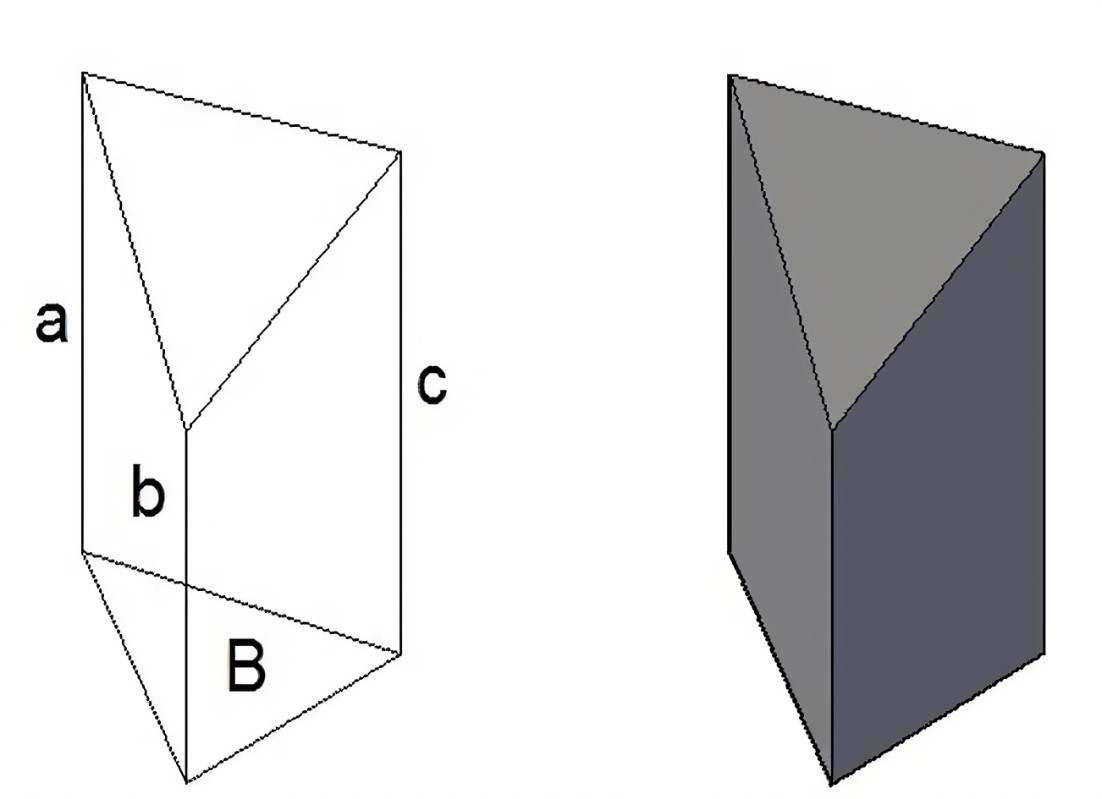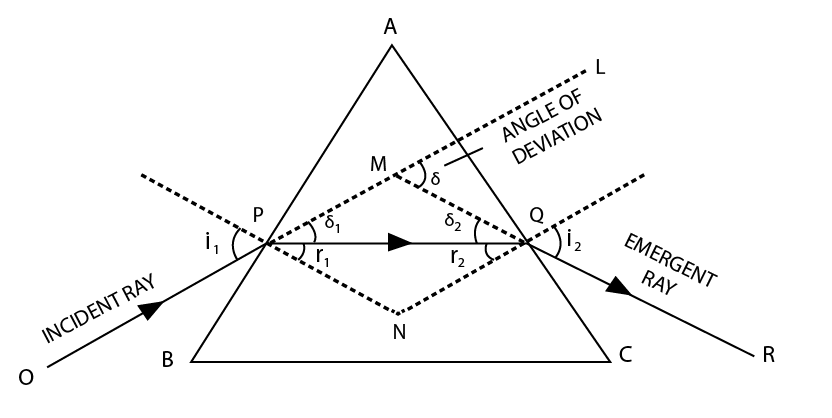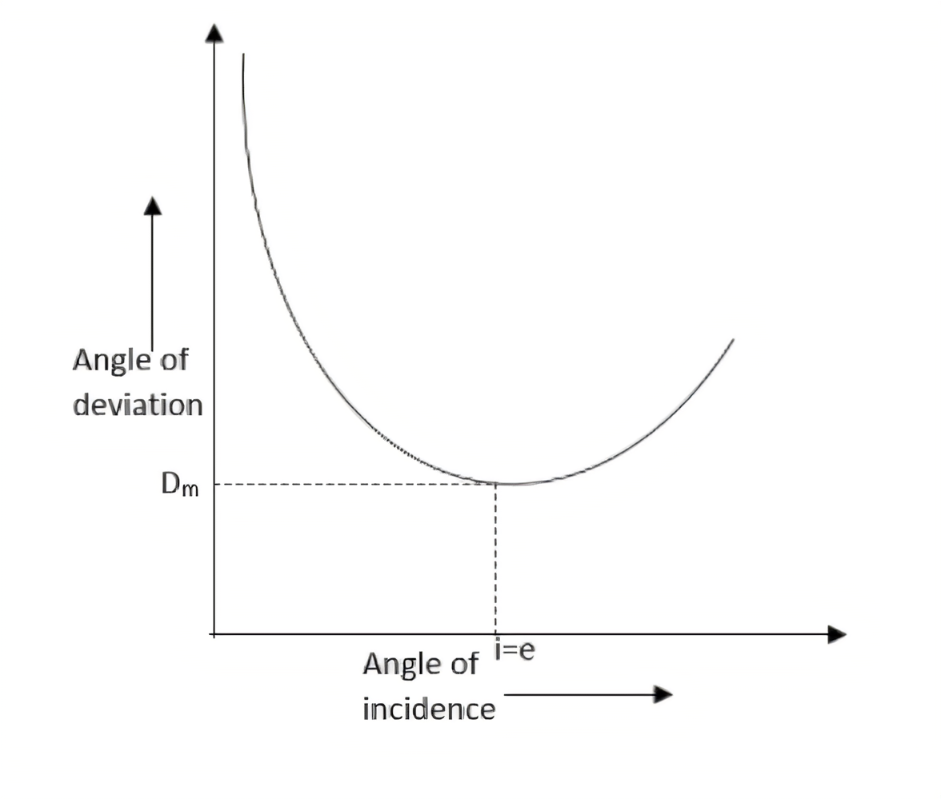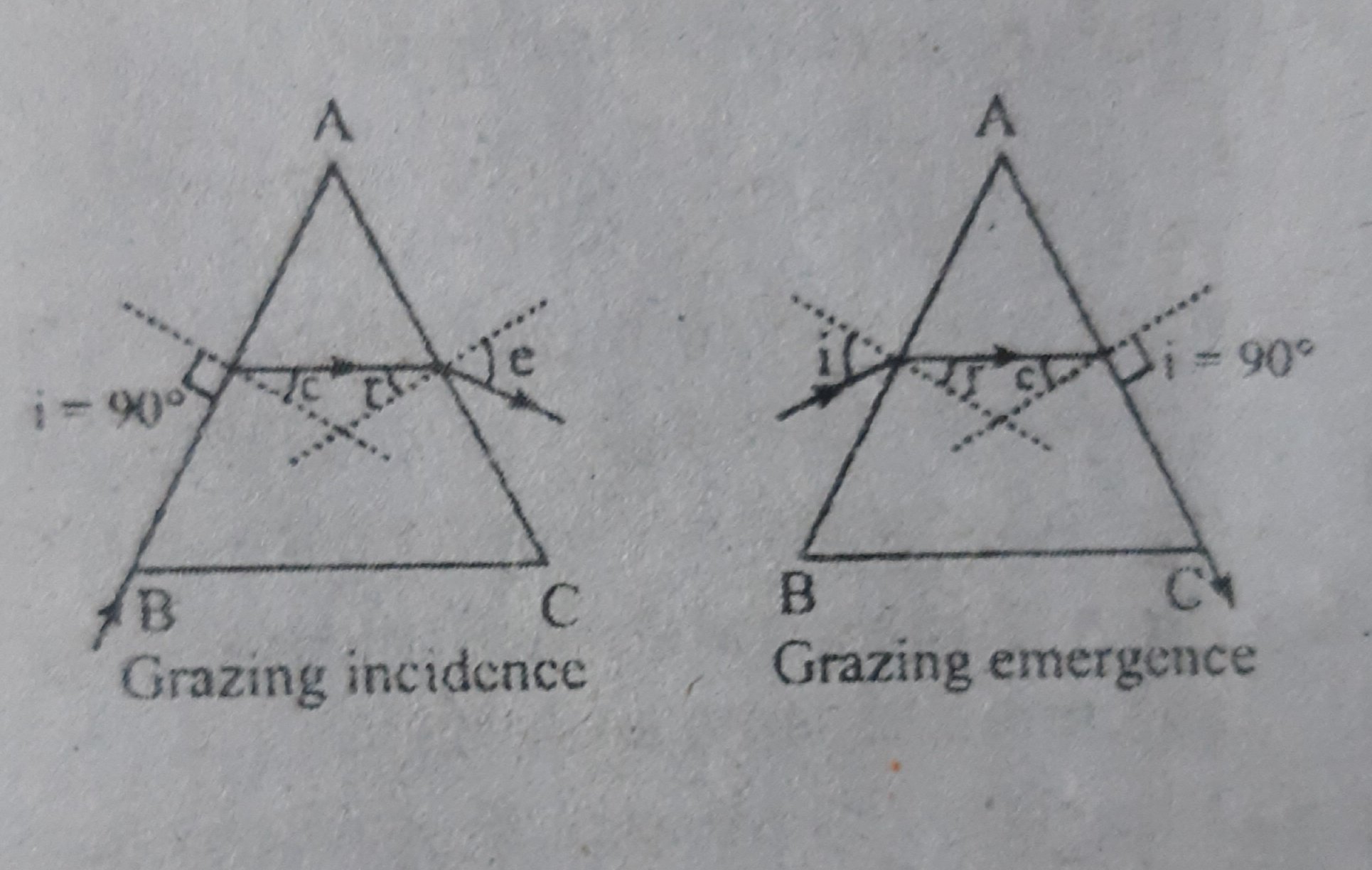Prism
- Prism is a transparent refracting medium bounded by two plane surfaces meeting each other along a straight edge.

- Angle of prism: Angle between the two refracting faces is called the angle of prism.
Refraction through a prism

Angle of Deviation: The angle between direction of incident ray and emergent ray is called angle of deviation.
Minimum deviation: At a particular angle of incidence, the angle of deviation is minimum and this angle is called the angle of minimum deviation.

A=r1+r2
+A= i+e
Minimum Deviation: At a particular angle of incidence, the angle of deviation is minimum and this angle is called the angle of minimum deviation.
=
For small angled prism: =A(-1)
Grazing Incidence : When a ray of light is incidence on a face of a prism with an angle of incidence 90, the ray lies on the surface and is refracted through the prism. This refraction of the prism is called the grazing incidence.
=90+e-A=90+e-(c+r)
Grazing Emergence or limiting angle of prism
The largest value for the angle of prism for which the incident and emergent ray travel along the refracting faces on the prism is called limiting angle of the prism.

A=2C
=180-2C
- Deviation of prism is maximum for violet and minimum for red.
- For a small angle prism, deviation does not depend on angle of incidence.
- If the angle of prism is more than double the critical angle, there is always total internal reflection.
- Deviation and dispersion takes place in a prism.
- There are two angle of incidence for which the deviation is same.
- If the refractive index of the surrounding is more than that of the prism than the light bends away from the base.
- In a crown glass, velocity of red light is 1% more than that of the violet light.
- In the minimum deviation condition, the deviation on the two faces of the prism are equal.